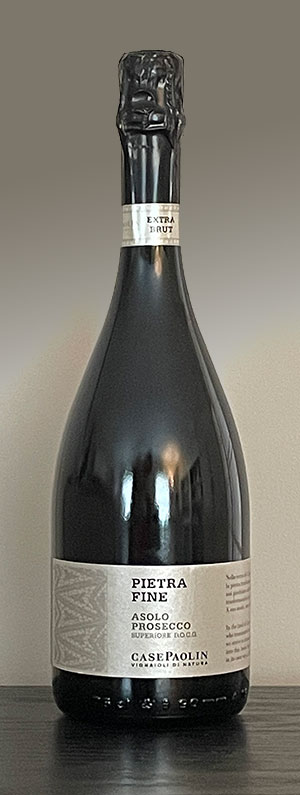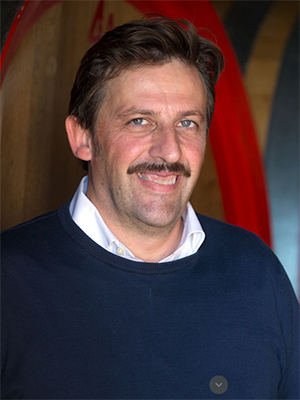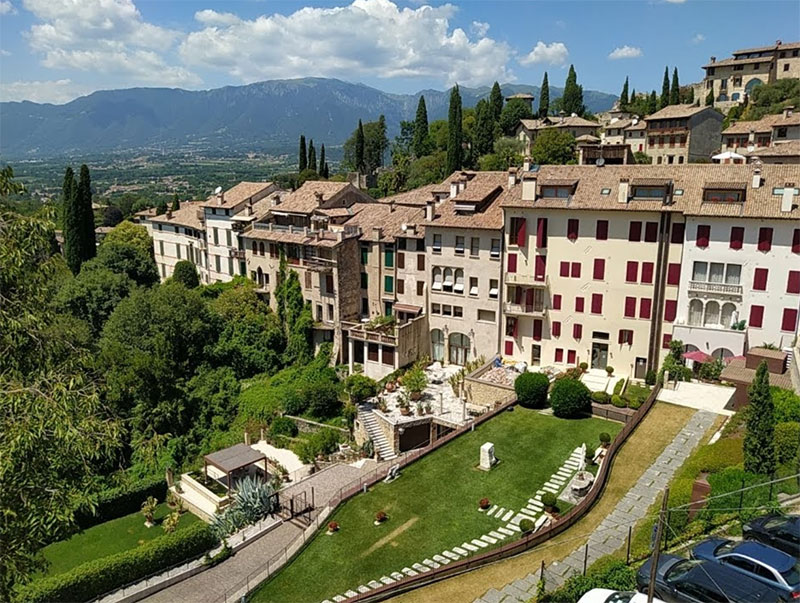
Case Paolin Pietra Fine Asolo Prosecco DOCG
The ancient town of Asolo sits about 40 miles northwest of Venice in Italy’s province of Trevino. The Museo Canoviano is situated here, home to some of the works by Antonio Canova (1757-1822). Canova was the son of a stonecutter and grandson of a stone mason, and was an Italian Neoclassical sculptor famous for his marble sculptures. Indeed, he is often regarded as the greatest of the Neoclassical artists. Pietra Fine is Italian for Fine Stone, an homage to the work of Canova housed in Asolo, as well as the grey stones of one of Paolin’s vineyards that was once a riverbed.
In the early 1970s, Emillio Pozzobon, a farmer from a long ling of farmers, bought the estate where his father and his grandfather had worked as sharecroppers. Although the property had largely been used for the cultivation of silkworms, he devoted himself entirely to growing grapes there.
Today, the winery is overseen by Emillio’s three sons, Diego, Adelino, and Mirco.

Born in 1963, Diego is the eldest of the Pozzobon brothers. As a young man he worked for a while as a builder together with his uncle before coming to his father’s vineyards, where he prefers to spent his working hours to this day as vineyard manager.

Born in 1965, Adelino runs the cellar, stubbornly anchored to the concept of “high quality” and with one eye always on improving the wines.

Born in 1973, Mirco is the winery’s technician. In the early 1990s he graduated in oenology from Conegliano Universit. and once he entered the family business he brought a revitalized way of thinking about wine and vinegrowing.
In the 1980s, “organic” had not yet become an agricultural cliche. However, and perhaps intuitively, the Pozzobons were among the very first in the area to drastically reduce the use of chemicals in the vineyard. Their commitment to organic management reached fruition in 2012 when they were certified organic by MIPAAFT, the Italian Ministry of Agricultural Food, Forestry and Tourism Policies.
On the label of each bottle that comes from the winery are the words “Vignaioli di Natura,” i. e. Winemakers by Nature. reflecting respect for nature and the family’s long history as farmers. The Pozzobons are committed to traditional framing practices, but use them with updated knowledge and resources, such as trying to avoid copper, even though it is allowed in organic farming, and making sure that the main grape for Prosecco, Glera, is only hand picked as the skins are delicate and the vines grow on steep hillsides; indeed, most Asolo Prosecco DOCG wines come from hand harvested grapes. Mirco explained his theory of organic viticulture by saying, “You rent for your son,” noting that we have a responsibility for future generations.

The Prosecco DOC is comprised of nine provinces within the regions of Friuli Venezia Giulia and the Veneto. Case Paolin’s vineyards are in the Veneto’s Treviso province, in two areas near each other, but whose different soil types each inform the characters of their wines. On one side are the grey stones of the Belvedere plain that was once a bed of a tributary of the Piave river. On the other side are the Montello hill’s red soils rich with iron. The Asolo Prosecco vineyard in Possagno is home to Glera vines over thirty years old.
Case Paolin Pietra Fine Asolo Prosecco DOCG
The key grape of Asolo is Glera. The Friulian synonym for Glera is Prosecco, which has a murky etymology. At one time, Prosecco could be any sparkling wine made with different grape varieties, as long as the main component was Glera, but Perera, Verdiso, and Bianchetta were also often used. Today, Prosecco is carefully defined under the Italian Denominazione di Origine Controllata e Garantita, or DOCG. It is the highest wine classification in Italy, and means that there are controlled production methods (controllata) and guaranteed wine quality (garantita) that go into each bottle.
95% of Prosecco today goes through two fermentations. Unlike the French méthode champenoise [aka méthode traditionelle], which is a double fermentation in the bottle, Prosecco fermentations usually take place in large stainless steel tanks, which offer a more efficient process. Specifically for this selection, the first fermentation occurred in steel tanks at a controlled temperature of 59° F (15°C). The second fermentation was in pressurized tanks (Martinotti Method). The wine rested on the lees in the tanks for about nine months with daily batonnage.
This wine is 100% Glera from a single vineyard. It pours a very pale yellow in the glass. Indeed, everything is understated about this wine. My wife exclaimed, “It has no taste!” I wouldn’t go that far, but the nose is quite delicate. The mousse is fine-grained. The palate offers flavors of subtle citrus, floral hints, and just a touch of sweetness. It has an excellent mouthfeel and good acidity. ABV is 12%.
Back to blog posts: winervana.com/blog/
